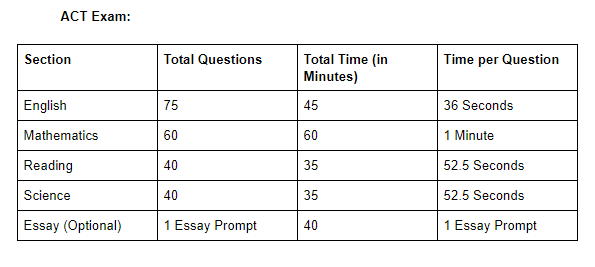January is the start to a new semester for all students, and it is also marks an important month for high school students. Regardless of what year the student is in, it indicates a new start for not only grades in classes, but also an emphasis on preparing for the next steps. This article will summarize some things that students in each year of high school should start thinking about, and also provides some reminders and warnings for each year.
9th Grade
It is common for students first entering High School to simply take courses that are recommended by their counselors. However, oftentimes these recommendations do not take into consideration the school’s own prerequisites for Advanced Placement (AP) or International Baccalaureate courses. Instead most recommended classes are chosen to instead prioritize the various prerequisites for graduation (i.e. Physical Education, Life Sciences, etc) without considerations for the need of future flexibility.
While it may seem perfectly fine to passively accept default class schedules, current 9th grade students must take the time to plan ahead for classes they wish to take in the coming years as well as seriously consider whether or not they are prepared for the rigor of more difficult courses. AP and IB courses are not courses to be taken lightly, as they are considered the introduction to college level academic material. The positives for taking such courses include increased GPA, credit that can be counted during college, and stronger preparation for actual college when the time comes. Even with such benefits, it is best to start looking into the curriculum of the AP and IB courses available at the student’s respective high school in order to see if the student would be able to handle the course load. It must also be emphasized the possible importance of previewing the AP or IB content during the summer, so that the student has an easier transition going into 10th grade.
Even with such preparation, students tend to underestimate the rigor and time needed in order to do well in an AP and IB classes. Many times, I have seen students, after taking their first exam without preparation, start with a Fail or D in their first test. It is important to start learning the study habits and train for the mental endurance necessary to start strong in the AP or IB course. Royal Education understands and works to provide this type of guidance to all of its students.
Also, it is recommended that students, if they are not already involved in extracurricular activities, start being involved in multiple organizations. It will not only allow 9th grade students to grow as individuals, but also give them the opportunity to start working towards gaining leadership positions and responsibilities.
10th Grade:
10th grade is the year that most students first become exposed to the rigors of AP or IB courses. It is important to adapt study habits and courses loads based on how students did during their first semester of 10th grade. For example, if the student did not do well in their AP or IB History course, then it is recommended that the student consider transitioning to Honors History the year afterwards. Such decisions will allow the student to be able to focus on doing better in the courses that they are stronger in, while having more time to lead or grow in outside activities and extracurricular ventures.
It is also highly recommended that sophomore students immediately work to get involved in extracurricular activities if they have not started to do so yet. The time window for leadership positions in most activities close after the sophomore year. By being involved in these activities, it gives students the chance to be exposed to different fields and solidify what they may be passionate in. This can provide them more direction as to what major they would want to do in college, and potentially as a career.
11th Grade:
In this semester, 11th grade students should have adapted to the rigor of the coursework along with extracurriculars they are involved in. Also, the planning for 12th grade curriculum tends to become more straightforward as specific courses such as Government / Economics are usually required in the school. It becomes important that juniors continue to work hard to get good grades and to push towards getting leadership roles in organizations they have been committed to since their earlier years.
Asides from this, it is also important to start planning for the complexities of 12th grade. As 12th grade students tend to max out their possible workload with AP or IB courses along with leadership positions in extracurriculars, it is still important for students to start planning out their college plans. I highly recommend that students start looking over potential colleges they may be interested in, and to even start familiarizing themselves with the college application process. The college application process is long and sometimes tedious, involving selecting colleges that match the student’s interests, filling out applications, and working on multiple essays. It is recommended that during the summer that upcoming 12th grade students get college counseling, and Royal Education is proud of its record and the work that we have done to support students to be successful in the college process.
12th Grade:
During the second semester of 12th grade, there tends to be a common trend that occurs among seniors. Oftentimes referred to as “senioritis,” it usually occurs when students in their senior year end finally finish all of their college and scholarship applications. Many 12th grade students end up unmotivated and unwilling to put their full effort into their second semester classes, believing that they are all set for colleges. At times, it is also due to the burn out from taking on many rigorous courses, extracurriculars, and college applications at the same time.
Even though it is understandable why “senioritis” occurs, this is a huge and possibly fatal mistake. It cannot be stressed enough that 12th grade students must still put their full effort in their courses and extracurriculars. Even though it may be the case that college decisions come out during the second semester before their grades are even reported, colleges still reserve the right to reject students based on their second semester academic record.
In the University of California (UC) website, the conditions for admissions to a UC has a minimum GPA requirement of 3.0 for California residents. This also includes the assumed expectation that students do not receive a D or Fail in any courses unless extenuating circumstances arise, which requires students to report it to the university in advance. In other schools, the assumption is made that students accepted to their respective university are expected to maintain a GPA similar to what was submitted for admissions. If these conditions are not met, universities are allowed to rescind their admissions during the summer after the student has graduated from high school.
Royal Education hopes that these suggestions and warnings were helpful for your child. If your child is struggling in any academic courses or needs advising to prepare for the college application process, we believe that we can do the best job in supporting your child. If you have any questions or want to schedule a meeting, feel free to reach out to us in the following social media. We hope to hear from you!
Website: www.royaled.net
Phone Number: (818)-275-3424
Facebook: www.facebook.com/royaleducationinc
YouTube: https://www.youtube.com/royaleducation













